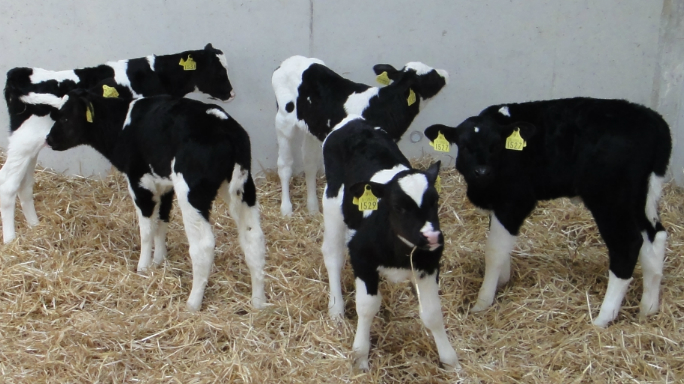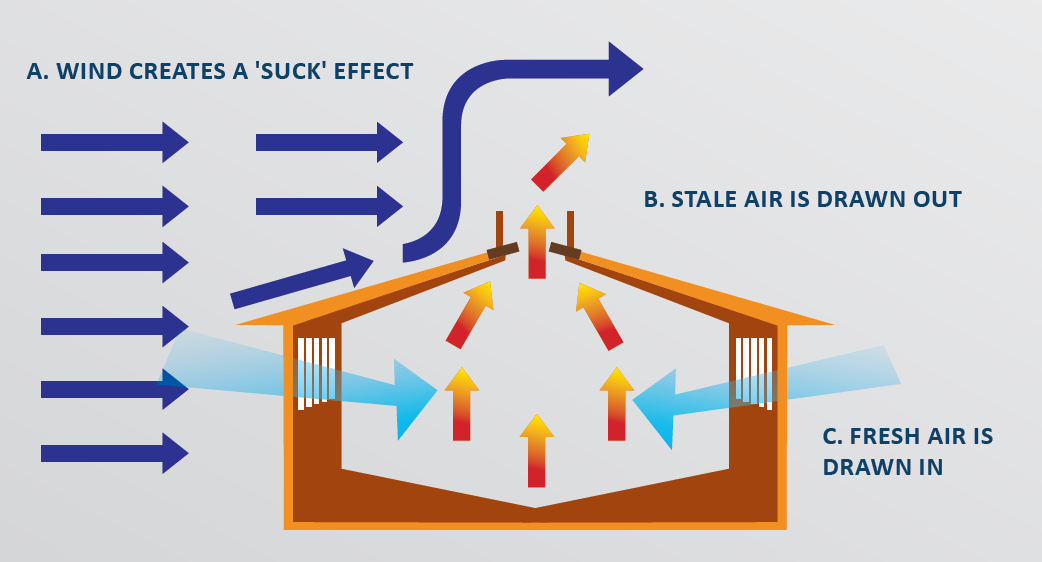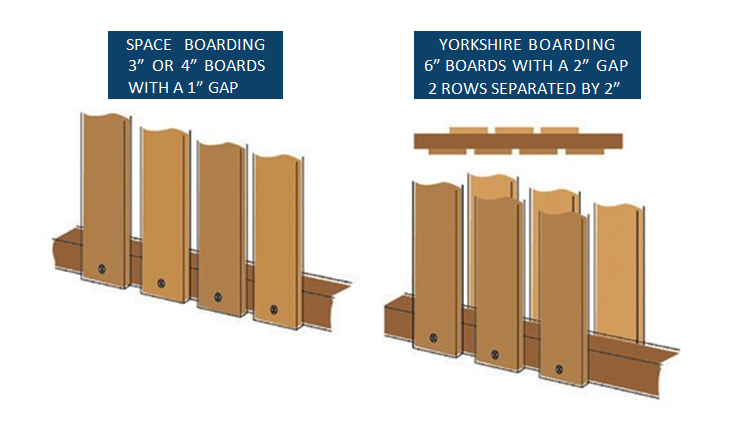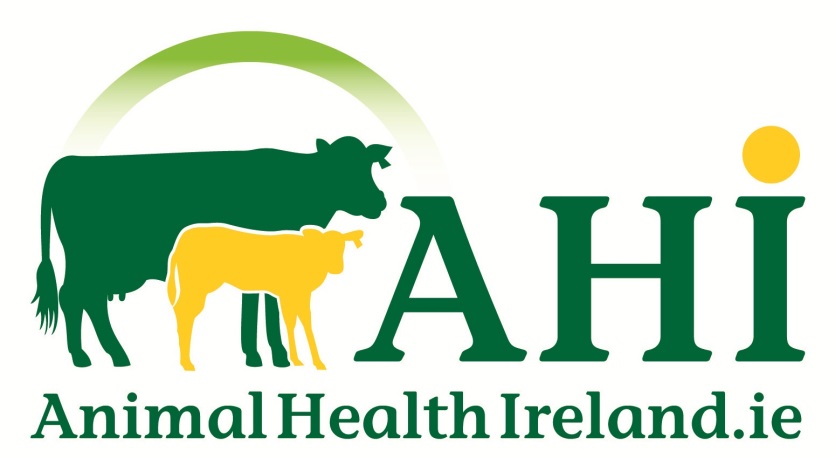0
Calf Housing

To ensure that calves stay healthy and perform well they require; - Adequate colostrum, milk feeding and appropriate meal and roughage with fresh water
- Control of pathogens (bugs) with good hygiene, disinfection and vaccination
- An appropriate environment/calf shed.
There are 5 key requirements for a calf shed
- Fresh air
- No draughts
- Dry/good drainage
- Warm – temperature
- Clean and cleanable.

1. Fresh Air
- Sweeps out the dust / ammonia & bugs.
- A biocide – viruses will survive for a shorter period of time in fresh air than in stale air.
- Need an outlet and an inlet
- The outlet is 0.04m2/calf e.g. 2m2 for 50 calves
- The inlet is two to four times the area of the outlet e.g. 2-4m2 for 50 calves on two sides of a calf shed.
- Keep dust to a minimum – rolling out bales of straw is more effective than shaking up straw at keeping the dust load down. Do not use a straw blower. Dust creates irritation and makes it easier for bugs to become established in the airways of the calf.
- Yorkshire boarding is preferable to space boarding or vented sheeting. It provides draught free air into the shed without allowing in the rain. As it is made from wood it provides more insulation than tin, so helping to keep calves warm.

2. Draughts
- A draught is a flow of air of greater than 0.5m/second that gets in below the animals height.
- Calf sheds should be sealed to 4 feet (1.2m) in height to prevent draughts from occurring.
- Need fresh air but must control the speed at which it enters the house.
3. Dry/Good Drainage
- Moisture must be controlled for two reasons because it:
- Increases survival and spread of bugs
- Decreases the temperature in the calf house e.g. a damp room vs a dry room.
- When the calves are in residence, don’t wash down calf house floors – or utensils such as buckets in the calf house itself.
- Good design and drainage of the calf pens is essential to keep the beds dry (a floor slope of 1:20 is recommended) and ensure they don’t need to be washed down to keep them clean.
4. Temperature
- Calves perform best at 15-20 Centigrade but don’t generate sufficient heat to insulate themselves from colder temperatures until their rumen is fully developed. This happens sometime after they are weaned off milk onto a solid diet.
- Deep beds of straw are an effective way of protecting the young calf from the cold. They should be able to 'nest' so that their legs are covered by straw when lying down.
- Breathable washable calf jackets are useful for a dry new born calf up to one month of age- from then on they’re starting to generate more of their own heat as the rumen starts to develop.
5. Clean and Cleanable
- When calves are in the shed, the use of water should be kept to a minimum. Easily cleaned floors and walls are important to remove bugs from the building.
- When the shed is emptied, deep cleaning with power washers, steam cleaners and appropriate disinfectants should be carried out as soon as possible afterwards. Once cleaned out and disinfected a long rest period is an effective means of ensuring that bugs are eliminated from the calf house.
General design Considerations
Ideally a calf shed should be situated upwind of all the other cattle sheds and should be built with the side walls perpendicular to the prevailing wind.
- A calf house should not share an air space with older animals. Ideally no more than 60 calves in the same air space and smaller group sizes (8-12) in each pen are easier to manage.
- Calves up to 100kg require a pen area of at least 1.67m2 each, better performance and less disease is associated with 2-2.5m2 per calf.
- Long narrow houses are easier to ventilate than wide square houses. The width of a house should not be greater than 11m.
- The pitch of the roof should be at least 23o, to give a difference of 1.5-2.5m difference in the height of the outlet and the height of the inlets.
- Upstands, as shown above, are preferable to cowls over a ridge outlet. Cowls can lead to a down draught in certain wind conditions.
- To allow good drainage the slope of the floor should be 1:20 and it should be smooth so that water does not pool but drains away freely. Areas of wet concrete should be kept to a minimum as these greatly reduce the temperature in the shed.
- Buckets should be washed after each use and feeders should be washed at least 2 times per day.
- A dedicated area protected from faecal contamination and away from adult animals and through traffic should be used for washing equipment. Ideally, this would be located outside the calf shed or in another shed.


First Published 01 February 2018
Tagged with: Dairy